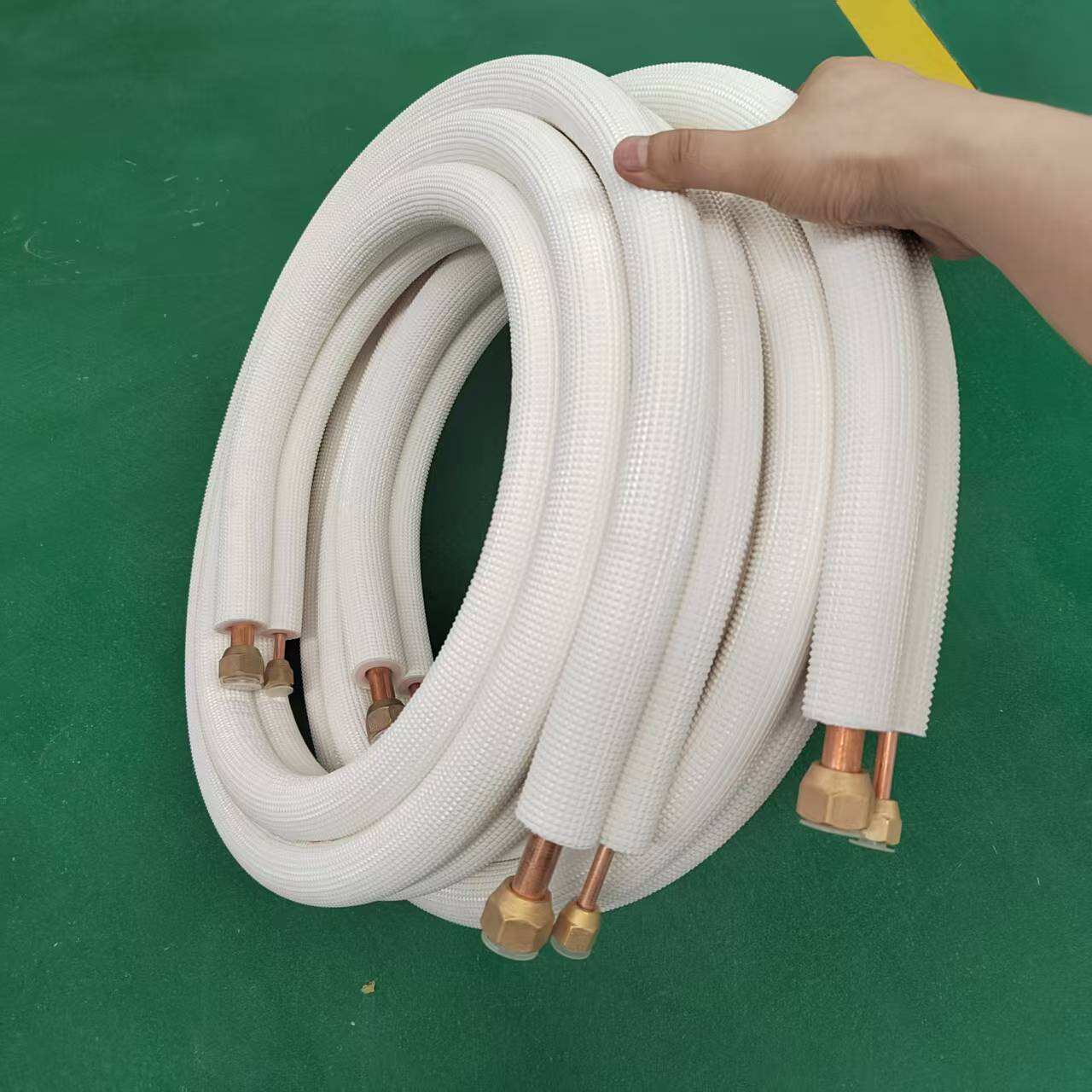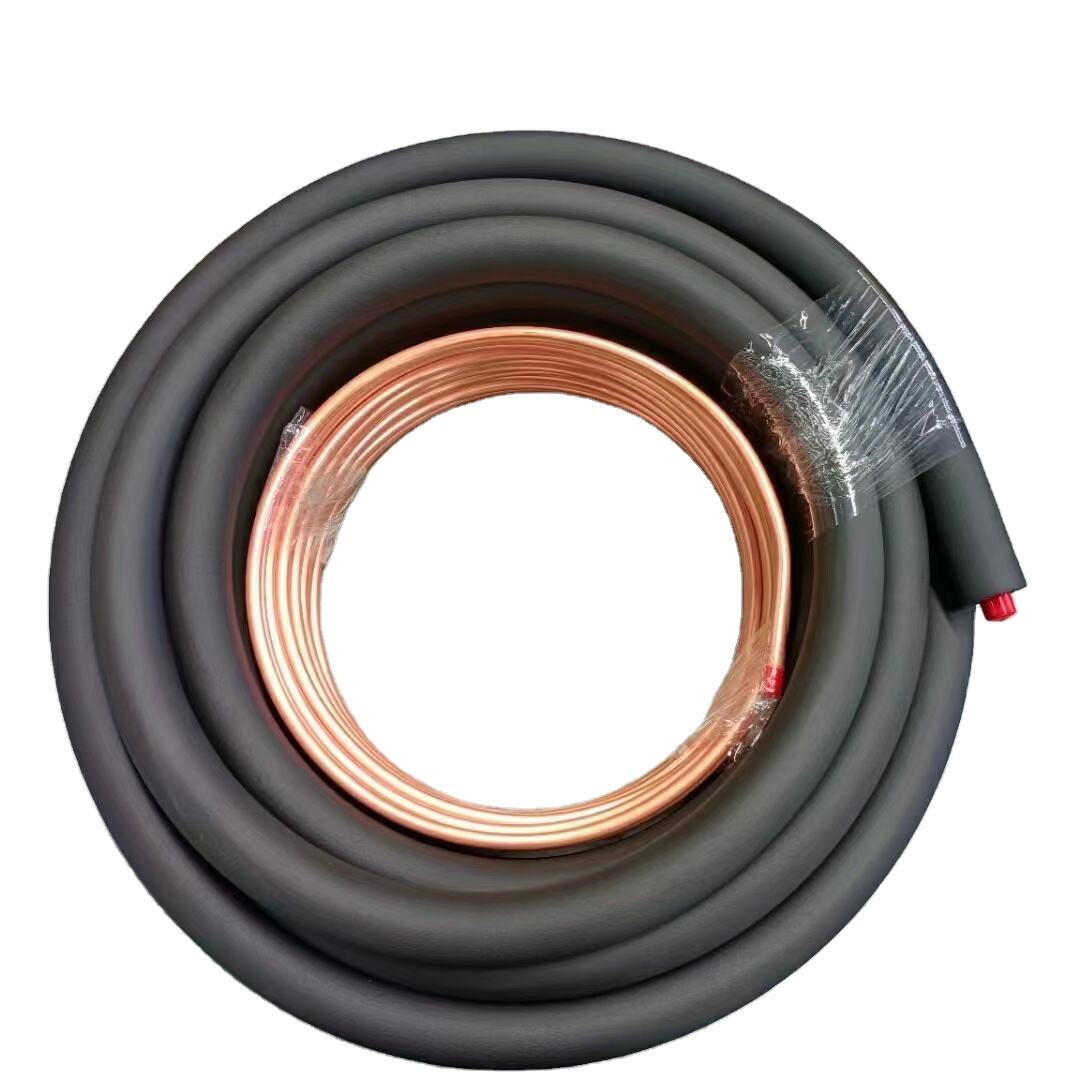Understanding Modern HVAC Insulation Solutions
The evolution of HVAC technology has brought forth innovative solutions that challenge traditional methods, particularly in the realm of line set insulation. As building efficiency standards become increasingly stringent, contractors and facility managers are turning to advanced materials like Kflex line sets to maximize system performance. These modern insulation solutions offer unique advantages that warrant a closer look, especially when compared to conventional insulation methods that have been industry staples for decades.
The importance of proper line set insulation cannot be overstated. It directly impacts energy efficiency, system longevity, and operational costs of HVAC systems. As we delve deeper into this comparison, we'll explore how Kflex line sets are revolutionizing the industry and why more professionals are making the switch from traditional insulation materials.
Core Components and Material Properties
Advanced Construction of Kflex Line Sets
Kflex line sets feature elastomeric foam insulation specifically engineered for HVAC applications. The closed-cell structure provides superior moisture resistance and thermal efficiency. The material's molecular composition creates millions of tiny air pockets that effectively trap heat and prevent thermal bridging. This advanced construction ensures consistent performance across varying temperature ranges and environmental conditions.
The outer jacket of Kflex line sets incorporates UV-resistant properties and enhanced durability features that protect against physical damage and environmental exposure. This integrated protection system eliminates the need for additional protective coverings, streamlining installation and reducing overall material costs.
Traditional Insulation Characteristics
Conventional insulation materials, such as fiberglass and polyethylene foam, have served the industry for many years. These materials typically require separate vapor barriers and protective jacketing to achieve comparable protection levels. The fibrous nature of traditional materials can trap moisture over time, potentially leading to degraded performance and increased maintenance requirements.
The multi-layer construction of traditional insulation systems can create weak points where moisture can penetrate, particularly at joints and seams. This vulnerability often requires additional sealing measures and regular maintenance to maintain system integrity.

Performance Metrics and Efficiency
Thermal Conductivity and R-Value Analysis
Kflex line sets demonstrate superior thermal performance with consistently low thermal conductivity values. The uniform closed-cell structure maintains its R-value even under challenging conditions, including high humidity environments. Laboratory testing shows that Kflex line sets maintain their insulating properties over extended periods, with minimal degradation in performance.
The material's inherent flexibility allows for tighter installation in confined spaces without compromising thermal efficiency. This characteristic is particularly valuable in modern construction where space optimization is crucial.
Energy Conservation Impact
Studies have shown that HVAC systems utilizing Kflex line sets can achieve energy savings of up to 30% compared to systems using traditional insulation. The superior thermal properties and consistent performance contribute to reduced energy consumption and lower operating costs. The material's resistance to thermal cycling helps maintain these efficiency levels throughout the system's lifecycle.
Long-term monitoring of installed systems reveals that Kflex line sets maintain their energy-saving properties with minimal maintenance, translating to sustained cost benefits for property owners and operators.
Installation and Maintenance Considerations
Installation Time and Labor Requirements
Kflex line sets significantly reduce installation time compared to traditional insulation methods. The pre-insulated design eliminates multiple steps in the installation process, requiring fewer tools and specialized skills. Contractors report installation time savings of up to 40% when using Kflex line sets, which directly impacts project timelines and labor costs.
The simplified installation process also reduces the likelihood of errors and improper application, ensuring more consistent performance across installations. This standardization helps maintain quality control and reduces callback rates for contractors.
Long-term Maintenance Requirements
The durability of Kflex line sets translates to reduced maintenance needs over the system's lifetime. The resistant nature of the material to moisture, UV exposure, and physical damage means fewer repairs and replacements are necessary. Regular inspections can be conducted with minimal disruption to operations, and when maintenance is required, repairs are typically simpler and more cost-effective.
Traditional insulation systems often require more frequent maintenance interventions, particularly in challenging environments. The multiple components and potential failure points create additional maintenance considerations that impact long-term operational costs.
Environmental Impact and Sustainability
Carbon Footprint Comparison
Kflex line sets demonstrate favorable environmental characteristics throughout their lifecycle. The manufacturing process requires less energy compared to traditional insulation materials, and the products are often made with recyclable components. The extended service life of Kflex line sets reduces replacement frequency, further minimizing environmental impact.
The improved energy efficiency of systems using Kflex line sets contributes to reduced carbon emissions during operation. This efficiency gain, combined with the material's durability, creates a more sustainable solution for modern HVAC applications.
Material Recycling and Disposal
At the end of their service life, Kflex line sets can be processed through established recycling programs, minimizing landfill impact. The uniform material composition simplifies the recycling process compared to traditional multi-layer insulation systems. Manufacturers often provide guidance and support for proper disposal and recycling procedures.
Traditional insulation materials may present challenges in recycling due to their composite nature and potential contamination from long-term use. The disposal of these materials often requires more complex handling procedures and may have greater environmental implications.
Frequently Asked Questions
What makes Kflex line sets more moisture-resistant than traditional insulation?
The closed-cell structure of Kflex line sets creates a natural vapor barrier that prevents moisture penetration. Unlike traditional insulation that may require additional vapor barriers, the integrated design provides inherent moisture protection throughout the material's entire thickness.
How do Kflex line sets maintain their performance in extreme temperatures?
The engineered elastomeric foam used in Kflex line sets is specifically designed to maintain its physical properties across a wide temperature range. The material's molecular structure remains stable in both hot and cold conditions, ensuring consistent insulating performance regardless of environmental challenges.
What is the expected lifespan of Kflex line sets compared to traditional insulation?
When properly installed, Kflex line sets typically last 15-20 years or more, often outlasting traditional insulation by several years. The integrated protection features and resistance to environmental factors contribute to this extended service life, reducing the need for replacement and associated costs.




